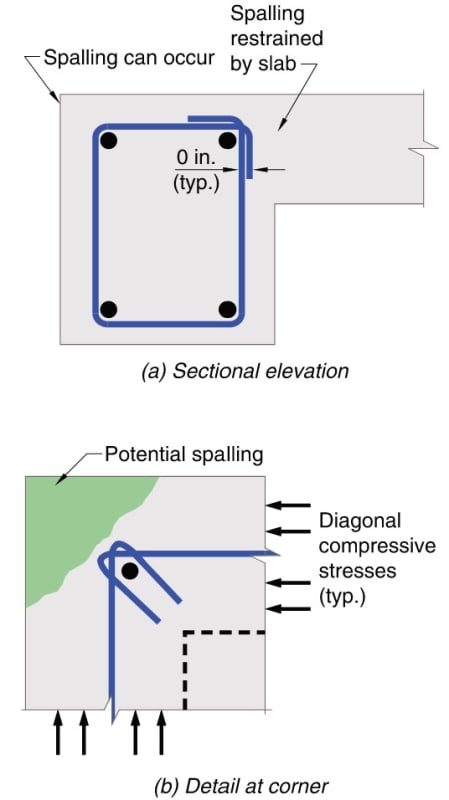NunavutEng
Structural
Hi all,
First post, I've been lurking threads for a long time but this one time my case is specific enough that a search did not produce any conclusive answers.
I'm on site building a slab on piles for an industrial facility, we're bending everything by hand due to the fast-track nature of our project and logistic concerns with rebar. The slab is 1000mm thick with piles every 3m c/c. There's sets of stirrups around piles to counter shear forces, and those stirrups are drawn with 135 degree hooks.
I've read other threads regarding hooks on stirrups and there's some debate regarding if 90 deg. hooks are sufficient or if 135 deg. hooks are needed even if the hook is not around a corner or if there's seismic consideration. We're building on the Canadian shield so there's no significant seismic consideration.
My question - is there spalling consideration to be taken of, if the stirrups are hooks under a contiguous surface with 50mm cover (IE not a corner)?
First post, I've been lurking threads for a long time but this one time my case is specific enough that a search did not produce any conclusive answers.
I'm on site building a slab on piles for an industrial facility, we're bending everything by hand due to the fast-track nature of our project and logistic concerns with rebar. The slab is 1000mm thick with piles every 3m c/c. There's sets of stirrups around piles to counter shear forces, and those stirrups are drawn with 135 degree hooks.
I've read other threads regarding hooks on stirrups and there's some debate regarding if 90 deg. hooks are sufficient or if 135 deg. hooks are needed even if the hook is not around a corner or if there's seismic consideration. We're building on the Canadian shield so there's no significant seismic consideration.
My question - is there spalling consideration to be taken of, if the stirrups are hooks under a contiguous surface with 50mm cover (IE not a corner)?

